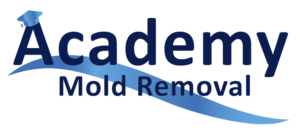How to Remove Mold from Bathroom Ceiling Without Damaging the Paint
September 21, 2024How to Safely Remove Mold from Shower Walls and Tiles
September 21, 2024Mold in the bathroom can be an unsightly and potentially harmful issue. It thrives in humid environments, making bathrooms a prime target. Fortunately, there are effective products and techniques to help you tackle this problem. In this guide, we’ll explore how to remove mold from bathroom ceiling using the best products and methods available.
Understanding Mold Growth
Mold spores are always present in the air, but they need moisture to grow. Bathrooms, with their frequent exposure to water and high humidity, provide the perfect conditions for mold to flourish. Recognizing the importance of prompt and effective removal is essential for maintaining a healthy home environment.
Best Products for Mold Removal
- White Vinegar
- Why Use It: A natural antifungal agent, white vinegar can kill up to 82% of mold species. It’s non-toxic and safe for use around pets and children.
- How to Use: Spray undiluted vinegar on the affected area and let it sit for an hour before scrubbing with a soft brush or sponge.
- Hydrogen Peroxide (3%)
- Why Use It: Hydrogen peroxide is an effective disinfectant that kills mold and spores. It’s less harsh than bleach and won’t damage paint.
- How to Use: Spray it directly on the moldy area and allow it to sit for 10-15 minutes before scrubbing and rinsing.
- Baking Soda
- Why Use It: Baking soda is a gentle abrasive and deodorizer that helps remove mold without damaging surfaces.
- How to Use: Mix baking soda with water to create a paste, apply it to the moldy area, scrub gently, then rinse.
- Commercial Mold Removers
- Why Use It: There are many commercial products specifically formulated to tackle mold. Look for ones that are labeled safe for painted surfaces.
- How to Use: Follow the instructions on the product label for best results.
- Bleach
- Why Use It: While effective in killing mold, bleach can damage paint and should be used with caution.
- How to Use: If you choose to use bleach, dilute it with water (1 part bleach to 3 parts water), apply carefully, and rinse thoroughly to avoid damage.
Techniques for Effective Mold Removal
1. Prepare the Area
- Safety First: Wear protective gear, including gloves, a mask, and goggles.
- Ventilation: Ensure the bathroom is well-ventilated by opening windows or using a fan.
2. Test a Small Area
Before applying any cleaning solution, test it on a small, inconspicuous area of the ceiling to ensure it doesn’t damage the paint.
3. Apply the Chosen Product
- Spray the Affected Area: Generously apply your chosen cleaning solution to the moldy spots. Avoid oversaturating the surface, especially if you’re using a product that could damage paint.
4. Let It Sit
Allow the product to penetrate the mold for the recommended time. This step is crucial for effective removal.
5. Scrub Gently
Using a soft scrub brush or sponge, gently scrub the moldy area. Be careful not to scrub too hard, as this could damage the paint.
6. Rinse and Dry
After scrubbing, wipe the area with a damp cloth to remove any residue. Ensure the area is thoroughly dried to prevent mold from returning.
Preventing Future Mold Growth
- Increase Ventilation: Use an exhaust fan or open windows while showering.
- Regular Cleaning: Frequently clean bathroom surfaces to prevent moisture buildup.
- Control Humidity: Use a dehumidifier if necessary to keep humidity levels low.
Conclusion
Removing mold from your bathroom ceiling is essential for both aesthetics and health. By using the best products and techniques outlined in this guide, you can effectively tackle mold issues while protecting your painted surfaces. Following these steps on how to remove mold from bathroom ceiling will help you maintain a clean, safe, and mold-free bathroom.
